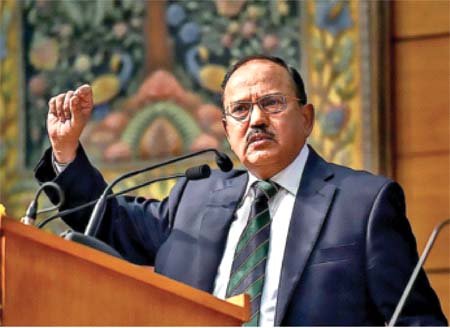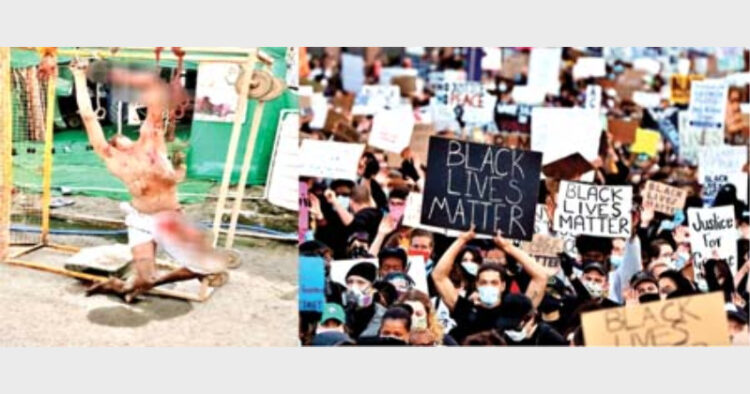The term civil society goes back to Aristotle’s phrase koinōníapolitik, where it refers to a ‘political community, commensurate with the Greek city-state (polis) characterised by a shared set of norms and ethos, in which free citizens on an equal footing lived under the rule of law.
But today, among the many different and confusing meanings of the civil society, it was GWF Hegel’s definition that fits perfectly in the modern and so-called liberal context. He describes Civil Society as a form of non-political society as opposed to institutions of a modern nation-state. While in classical republicanism, civil society was synonymous with political society, Hegel distinguished political state and civil society, what was followed by French political philosopher Alexis Charles Tocqueville’s distinction between civil and political societies and associations repeated by his successor Marx and Ferdinand Tonnies.

Marxism, having moved on from ‘Classical Marxism’ has now become ‘Cultural Marxism’. This new format is being used worldwide and has deadly results, which in return has supercharged the related organisations.
The so-called progressive outfits, including the civil societies group in alliance with the ‘Radical Islamist organisations’, are the prominent ingredients in the new recipe of cultural Marxism.

The decade of the 70s saw a steep rise in Naxalism, conversion activities and furthering the faultlines within the Indian society. The Communists, who the Congress governments constantly patronised, strengthened their penetration in the field of education and research in India. Simultaneously, creating a fault line in the society where it is non-existent or furthering it where is already exists.

In the wake of collapse of Communism, when Communism no longer remained a saleable currency, the global liberal-Left ecosystem re-invoked the Gramscian concept of civil society. Accordingly, they have always chosen to ride piggyback on anti-democratic forces such as jihadists, evangelistists and secessionists to further their agenda of creating the ground for revolution to ultimately overthrow democratic societies and institutions.
The issues in India are not exclusive
Many countries in the world are being targeted by their faultlines which are used by the practitioners of cultural Marxism in the garb of activism of civil liberties.
Recently even in a country like America, the example of Progressive-Islamic alliance is also visible. Prominent radical Muslim organisations are debating the issue of ‘Feminism’. Ten years ago, organisations like ‘Council on American-Islamic-relations’, which were found to be involved in the terror funding network by the federal prosecutors, were also the champions in rallying for the ‘Black lives matter’, campaigning for ‘Social-Justice reforms’ and ‘Minimum wages.’
While prominent Salafi clerics opposed the immigration policies of the then American President Donald Trump, Linda Sarsaur type of so-called progressive revolutionaries used the issues of Islamophobia (hatred against Islam), racism (Superiority feeling for owns race), xenophobia (hatred against foreigners), homophobia (hatred against homosexuals), transphobia (hatred against transgenders), ableism (discrimination in favour of able-bodied), ageism (discrimination against people based on their age), sexism (discrimination against people based on gender), and misogyny (feminine hatred) were used as a weapon to destabilise the social order.
The Never-Ending Search for the Newest Victim Class
In a crucial respect, classical Marxism and cultural Marxism will always bear an essential, enduring commonality—one that explains a lot about today’s modern Left.
Both classical and cultural Marxists see history as a series of struggles that divide the world into hostile/antagonistic groups of oppressors and the oppressed. Both seek out victim groups as the anointed group that will serve as the redeemer group. The victim group becomes the agent for emancipation in ushering in a new and better world. The Marxist must always be on the search for the victim class, which, in turn, must always be made aware of its victimisation. Its “consciousness” must be raised. In classical Marxism, this was simple: the victim group was identified by class/economics. It was the Proletariat. It was the factory worker.
This hasn’t been so simple in cultural Marxism because the culture is always changing: the victim group is constantly being searched for a new by the cultural Marxist. The group one year might be women, the next year a new ethnic minority, the following year another group. Today, cultural Marxists have a hard push to tap the “LGBTQIA-plus” (People’s World frequently uses that label) movement as the championed victim group.

This is where today’s Marxists, even in America, are toiling hard. They are working diligently on the cultural front. Thus, the new recruiting ground is the classroom floor, the campus, the university, the schools. That’s where the cultural workers who can usher in the fundamental transformation are being found. These modern cultural revolutionaries are succeeding magnificently in redefining everything from marriage and family to sexuality and gender.
The present and future of Classical Marxism in India
The 9th Congress report of the CPI (2007), the Maoists prescribes the planning and potential of work in urban areas, mostly through civil society groups. But if we analyse the chargesheet of the Bima-Koregaon case, it is quite visible that the Maoist groups have done a lot in terms of micro-level planning, execution, and monitoring of the 2007 document.
Based on the journey from the 2007 document to the recent success through the farmers’ agitation in 2021, via the Shaheen Bagh’s CAA protest, it is visible that the anti-India forces also instigate them to make a policy shift in the strategy of protests and even more beyond what is prescribed in the 2007 document. It is clear that the Maoist organisations will now focus more on the overground functioning in the coming decade, and the underground movement will become very limited and maybe just limited for the symbolic purpose.
Most of the Left political parties have lost charm and mobilisation capabilities, and their funding channels have been dried up to a maximum extent. The CPI Maoist organisation is also facing a similar kind of fund as well as cadre crisis for their PLGA operations.
In the near future, only those cadres exposed or having heavy criminal records will have the compulsion to remain underground while all others will join the overground civil liberties movement. The foreign fundings will also be diverted to such action programmes which have a democratic face value.
This vacant space of the Left political parties will be explored and tried to be covered by the overground activities of the Maoist–affiliated organisations and civil society groups. Based on this tactical shift, Maoist organisations are collaborating with Islamists and Christian Missionaries. The country will witness many more such protests on different issues in the same pattern in the near future. The civil societies will become a new active platform for the implementation of their agendas as well as propagation of ideologies.
To have a better and clear understanding of the organic relationship between the Maoists and Civil Liberties group, we must refer to point no: 3.4.5 of the 2007 document of the 9th Congress of the CPI Maoist.
The Maoist document named “Urban Perspective: Our Work in Urban Areas (UPUA)”, 2007, mentions that: “The organisations that most consistently oppose state repression and black laws are the various civil liberties organisations active in different parts of the country. We can work to some extent through them. They, however, have a poor mass base and limited political programmes. Thus, while we should work to broaden and strengthen such organisations, they cannot be the only forums for building the front against repression………
.Another excellent form of building broad fighting unity against repression is to take up particular cases of brutal state repression and immediately mobilise all sections of the masses in militant struggle. Police firings, lock-up deaths, rape by security forces, are some of the examples that can be used to rouse the masses into open battle………”
When the Indian National Security Adviser Ajit Doval said, “The new areas of warfare have shifted from territorial frontiers to civil societies. Wars are now fought with other means.” It contains a deep meaning.
When the warfare methods have moved on to 5th generation warfare techniques, we must also move on to the same generation defence techniques. The activities of Civil Societies in India must be given closer scrutiny and a proper audit.













Comments